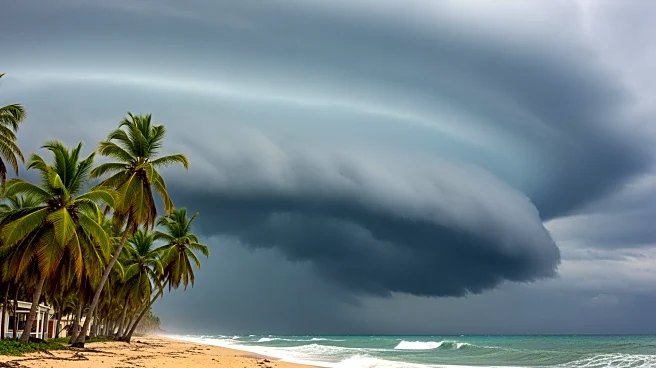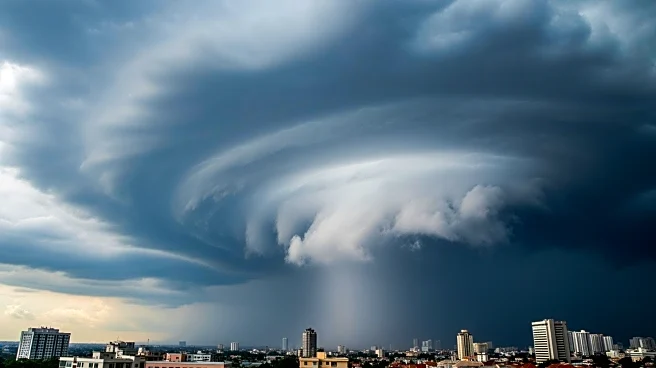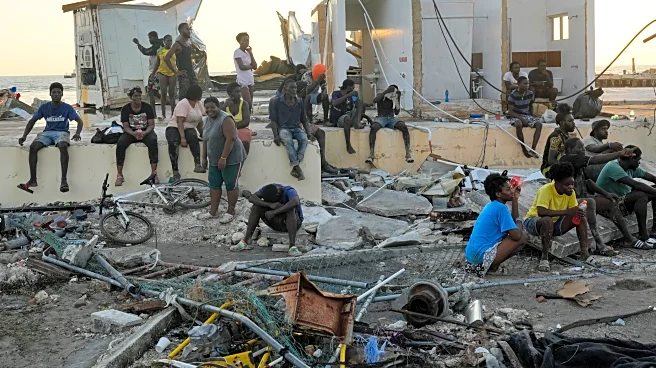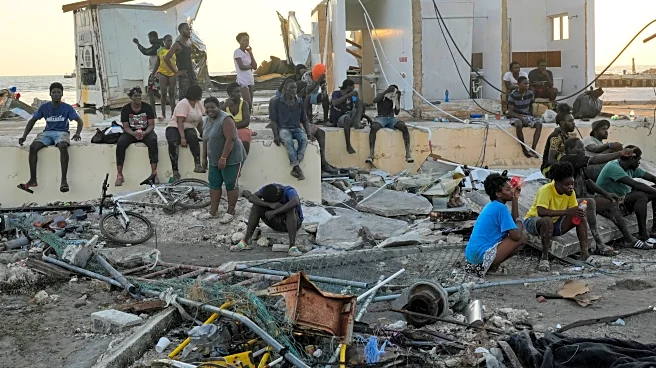What's Happening?
Catastrophe modeling company Karen Clark & Co. (KCC) has estimated that privately insured losses from Hurricane Melissa will reach $2.4 billion. This figure includes damages to residential, commercial,
and industrial properties in Jamaica and Cuba. The estimate is at the higher end of a range provided by Verisk, another data analytics firm, which projected losses between $2.2 billion and $4.2 billion. Cotality, formerly known as CoreLogic, also provided an estimate of $1.5 billion, with total property damage potentially reaching $5 billion to $9 billion when considering wind, surge, and flooding. The insurance penetration for households and small businesses is low, ranging from 5% to 20%, while coverage for large hotels and utilities is much higher. Reinsurers are expected to absorb most of the payout due to local insurers ceding the majority of their catastrophe risk.
Why It's Important?
The financial impact of Hurricane Melissa is significant for the Caribbean insurance and reinsurance markets. With low insurance penetration among residential properties, the burden of losses will largely fall on reinsurers. This event could become one of the most concentrated reinsurance events in the Caribbean, potentially affecting several aggregate covers. Fitch Ratings has indicated that while reinsurers will bear a substantial portion of the losses, it is expected to be an earnings issue rather than a capital event. The hurricane has also triggered a $150 million catastrophe bond for Jamaica, marking the largest payout in the history of the Caribbean Catastrophe Risk Insurance Facility. This situation underscores the vulnerability of the region to natural disasters and the critical role of reinsurance in mitigating financial risks.
What's Next?
The Caribbean Catastrophe Risk Insurance Facility is set to make a payout of $70.8 million to the Jamaican government to cover damages from Hurricane Melissa. This payout is expected within 14 days, subject to final model verification. The event highlights the need for increased insurance penetration in the region to better manage future risks. Reinsurers and investors in insurance-linked securities are likely to monitor the situation closely, as the hurricane season continues to pose challenges. The financial markets may see adjustments in risk assessments and pricing for future catastrophe bonds and reinsurance contracts.













